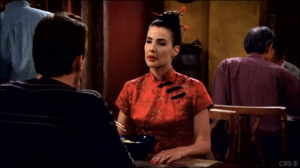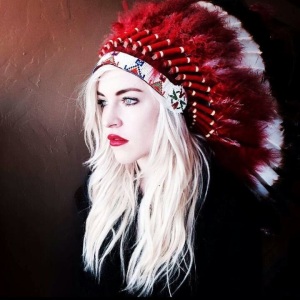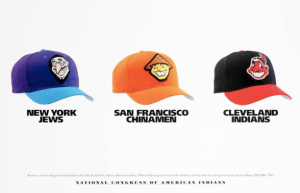By Bruce B. Mann
After researching and compiling information from this blog, I am left with the thought that the more I learn, the less I truly know. The foundational tenets and theories behind cultural appropriation are simple to understand, but as time goes on things do not seem to be getting better or at least cultural appropriation is becoming more obvious and blatant. In the media this past year we saw truckloads of white people twerking, celebrities and college students in blackface, television shows using yellowface, the celebration of white hip-hop artists over arguably more skilled black artists, continued appropriation of native cultures by fashion designers, and the continued vehement defense of racist, appropriated mascots and logos in sports.
The line between cultural appreciation and cultural appropriation is blurred but as many people have pointed out it comes down to respect and choice. As a privileged white male I have the choice to appropriate or use others cultures in a way that members of that culture cannot. I have never felt pressure to assimilate and drop my cultural clothing, music and artifacts to appear more professional, to fit in and in the end to survive. I don’t have to worry about that because my culture is the dominant one, which gives me the freedom (and for some the unfettered license) to pick and choose elements of other cultures to better express myself.
Defenders of appropriative activity will claim appreciation and cultural mixing but how often are we appreciated the people and history behind that culture. So often we take without thought about where these cultural artifacts came from and what they mean for that culture. It is exploitation flowing from power and privilege. It can also have the effect of distilling a peoples and culture down to a look, symbol, or sound are dehumanizing those from that culture. The issue of cultural appropriation ties directly into all of the readings and discussions this semester. It all comes down to power and control with the rules of behavior and action dictated by those in the dominant classes at the expense of the oppressed. Cultural appropriation at the end of the day is about capitalist power with the cooptation and exploitation of oppressed cultures in order to generate profit. The message being sent is that our society does not value you as people but values your culture as a means to generate income.
In looking at what needs to be done I see two tactics moving forward. First, we must continue to point out appropriation when we see it, explaining the harm and injury that can come with blind appropriation. Ignorance is not an excuse for continuing to support or engage in racist, oppressive behaviors. Second, we must be willing to connect with each other across cultures with love and respect. Cultural exchange is a powerful force but only when it comes from a place of respect and genuine search for understanding. We must listen to the voices of people from marginalized cultures and respect their opinions when they point out the subtle and overt ways their culture has been appropriated. We have the choice to listen, watch and wear what we want however we must also understand the social and historical implications of those choices. We live in a nation built through violence and colonization; we should not continue to further those power dynamics with appropriation.
While society at large, through the democratic tool of technology, is getting better at speaking up against cultural appropriation, the community at large remains unmoved. From Miley to Paul Frank to the Washington Racist-Named NFL team, exploitation and appropriation continues with no end in sight. Personally, I will work to impact this issue both personally and professionally. I am committed to continually questioning my choices around appreciation/appropriation in my personal life and professionally, I will work to address issues of appropriation with students whenever I see it. It will, however, come from a place of love and understanding rather than demonization.




